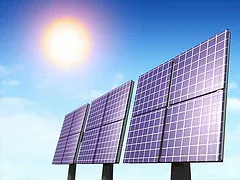
China rated most attractive market for solar energy projects
Bank Sarasin forecasts 2,500 MW of new capacity in China by 2012.
According to a release, in these challenging times, producers of photovoltaic (PV) modules and solar energy project developers are anxiously seeking attractive sales markets with minimal risks and good rates of return. According to Bank Sarasin’s country attractiveness matrix (CAM), China and the US are the most attractive markets for free-standing systems.
In its latest sustainability study, "Solar industry: Survival of the fittest in a fiercely competitive marketplace”, Bank Sarasin examines the 20 most attractive PV markets and presents them in a CAM which offers a valuable decision-making tool for producers of PV modules and project developers, especially large energy utility companies. Each of the 20 analysed markets presents both risks and opportunities – with opportunities illustrated as the internal rate of return (IRR). The refined risk analysis takes into consideration projected returns, governance and technical risks.
The reduction of feed-in tariffs in countries such as Germany, the Czech Republic and France continued during 2011 and impeded the growth of global PV installations. Although their rates of growth are slowing, existing markets such as Germany, Italy and France continue to show plenty of potential. Growth markets such as the US, China and India are also very promising. By contrast, a number of countries blessed with generous sunshine, such as Greece and Portugal, still face high administrative hurdles. Switzerland offers attractive returns thanks to the extremely low risk profile presented by small-scale installations.
China and India are upcoming PV markets
Bank Sarasin identifies India and China as upcoming PV markets. Conditions in China are promising. In 2010 500 megawatts (MW) of new PV capacity were installed. This year the figure could be as high as 1,950 MW. Sarasin forecasts 2,500 MW of new capacity in 2012. China has already a large solar manufacturing industry. If foreign PV demand were to decline or stagnate, the Chinese government could stimulate higher domestic demand for PV systems, mitigating comparatively high risks for domestic business against a low IRR rate.
India installed around 80 MW of new PV capacity in 2010. However, the government's ambitious
target for 2022 is 20 gigawatts (GW) of installed solar energy capacity. To achieve this, the Indian
authorities must simplify the current administrative processes and guarantee a better connection of PV installations to the grid. Bank Sarasin forecasts that capacity of 450 MW will be installed in
2011 and is cautiously optimistic about this market.
US and Japan are attractive markets
Japan, which has seen installations increase by almost 100% in the last two years to reach 991
MW in 2010, is very attractive according to the 2012 matrix for rooftop installations. The US PV
market has finally become a reasonable size and next year could become one of the world's top
three markets for free-standing solar systems in volume terms. With its high growth potential,
average IRR and relatively low risk profile, Bank Sarasin considers the US market an attractive mix
for all sizes of installations.








![Cross Domain [Manu + SBR + ABF + ABR + FMCG + HBR + ]](https://cmg-qa.s3.ap-southeast-1.amazonaws.com/s3fs-public/styles/exclusive_featured_article/public/2025-01/earth-3537401_1920_4.jpg.webp?itok=WaRpTJwE)
![Cross Domain [SBR + ABR]](https://cmg-qa.s3.ap-southeast-1.amazonaws.com/s3fs-public/styles/exclusive_featured_article/public/2025-01/pexels-jahoo-867092-2_1.jpg.webp?itok=o7MUL1oO)









 Advertise
Advertise


